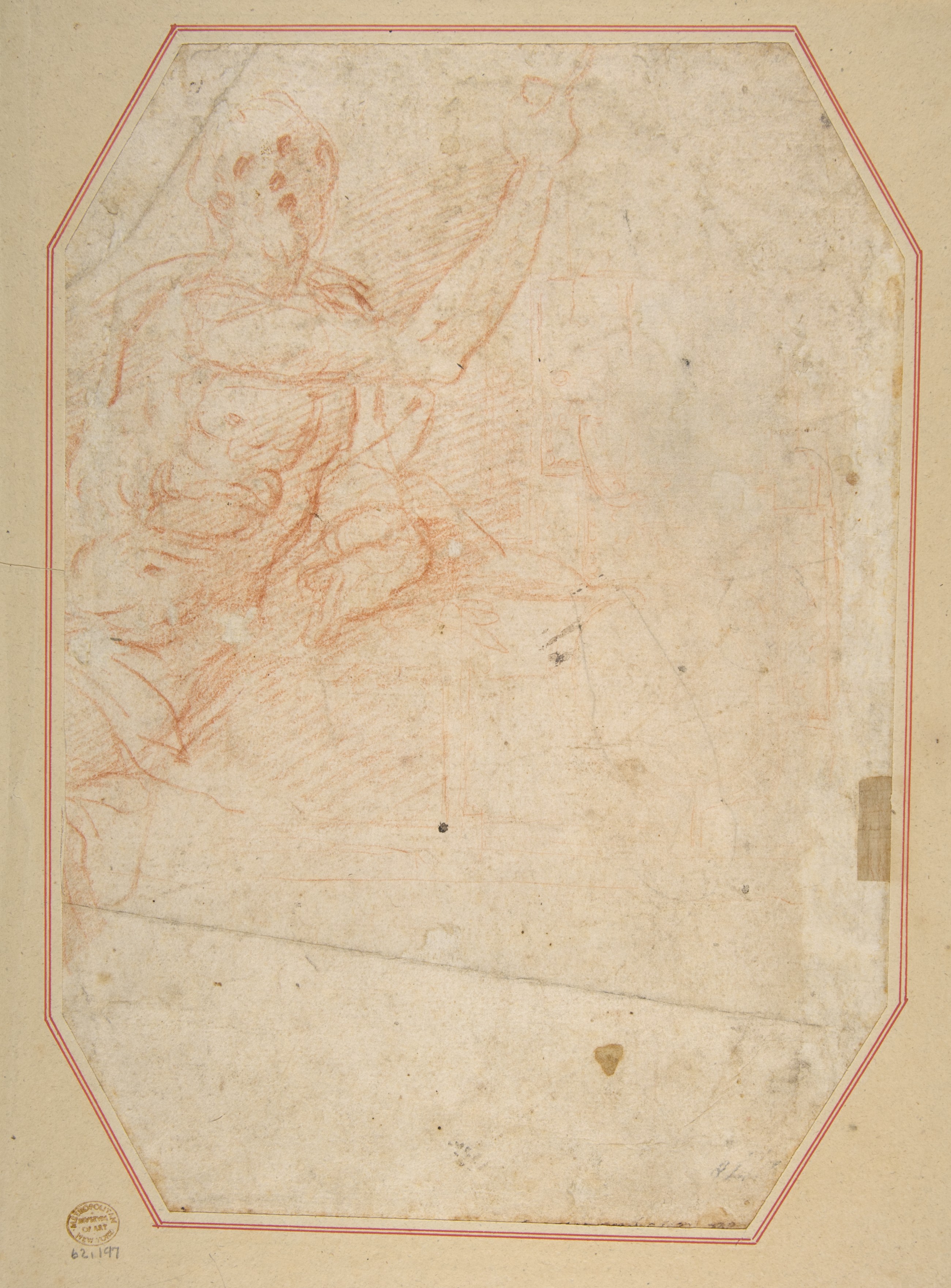Two Nudes Seen from Below (recto); Male Figure with Upraised Arm (verso)
Pomarancio (Cristoforo Roncalli) Italian
Not on view
In 1981 Lawrence Turčić recognized the figures on the recto of this sheet as studies by Roncalli for two of the personifications of winds that appear in a ceiling fresco surrounding the circular field of an anemoscope in the Sala della Meridiana, Torre dei Venti of the Vatican Palace. The figures are preparatory studies for southerly winds, Auser Africus and Notabilicus, two of the personifications surrounding the circular field in the center of the ceiling which names the various winds and indicates the direction of their origin. The Torre dei Venti (Tower of the Winds), Gregory XIII's astronomical and meteorological observatory at the Vatican, was constructed between 1578 and 1580. The frescoed decoration of the rooms of the Tower, executed from 1580 to ca. 1582, was a collaborative artistic venture between Niccolò Circignani, the brothers Matthijs and Paul Bril and Matteino da Siena. The Metropolitan drawing and the related figures in the Sala della Meridiana substantiate Baglione's hitherto unverified statement that Roncalli worked in the Vatican Palace under the supervision of Circignani on decorations for Pope Gregory XIII (Baglione 1642, pp. 288-89). There are a number of differences between fresco and drawing, the most obvious being the angle of the standing figure's head and the substitution of a deflated cloud for the skull in his right hand. John Gere (Nov. 1962) pointed out that the mount of this drawing is that of the English collector, William Young Ottley (1771-1836). (F.R.)
Due to rights restrictions, this image cannot be enlarged, viewed at full screen, or downloaded.
This artwork is meant to be viewed from right to left. Scroll left to view more.





